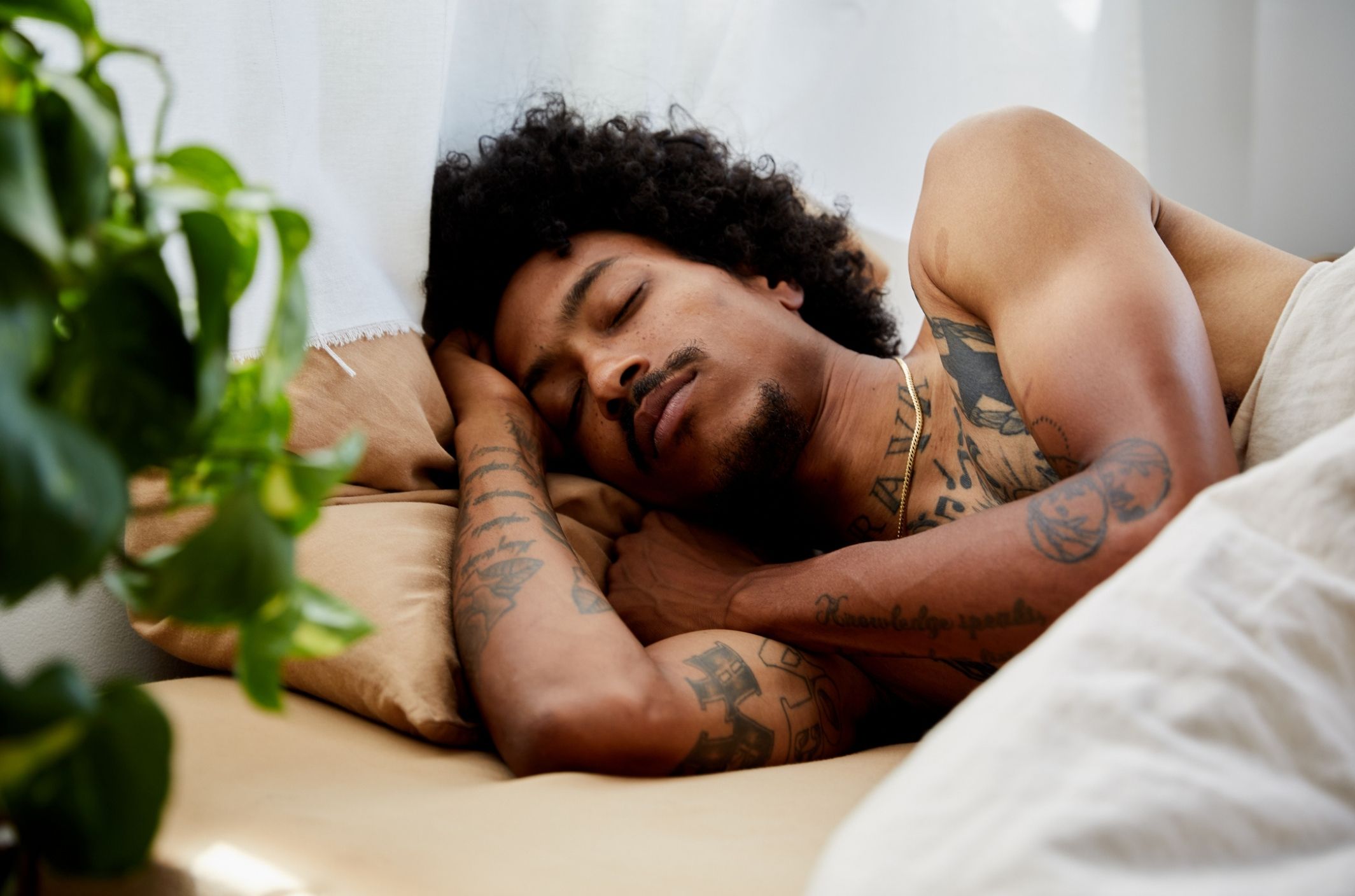Everyone experiences sadness and boredom. But for people with depressive disorders, the feeling of profound sorrow doesn’t pass. While depression is a serious mental health condition, many people are able to reduce symptoms or overcome them all together with appropriate treatment.
What is depression?
Depression is a commonly occurring but serious mental health condition that can impact how you feel, think, and act.
During a depressive episode, you’re less likely to appreciate the people and activities that usually bring you joy. If you’re experiencing a depressed mood, it’s common to struggle in school or work, argue with loved ones, and feel a diminished sex drive.
This mental health condition can affect a person of any age group or gender, although it’s diagnosed twice as often in women.
The symptoms of depression can impact almost every area of life. Without effective treatment, this mental health condition can lead to self-harm or suicide.
If you experience persistent and overwhelming feelings of sadness, worthlessness, and guilt, or you have suicidal thoughts, you may have depression.
If you’re experiencing depression, we want you to know that you’re not alone. There are effective treatments that target the most troublesome symptoms, and help is available right now.
In a psychiatric emergency, call 911 or go to the nearest emergency room. You can also call the National Suicide Prevention Hotline 1-800-273-8255 or text “home” to 741-741.
Statistics
According to the World Health Organization (WHO), over 264 million people experience depression worldwide. The Centers for Disease Control and Prevention (CDC) provide the following figures for the United States:
- 4.7% of adults live with regular feelings of depression.
- Among adults, symptoms of depression are most common between the ages of 18 – 29.
- Women are more likely to experience this issue than men.
- In 2019, 18.5% of adults surveyed had experienced symptoms of depression in the last 2 weeks.
- Over 13% of adults surveyed between 2015 – 2018 had used antidepressants within the past 30 days.
- There were over 48,000 deaths by suicide in 2018.
Types of depression
Depression is a term that’s used both by clinicians and in everyday language. In the non-clinical sense of the word, depression may be used to describe a feeling of being really down. You can feel depressed without necessarily having a diagnosable condition.
In the clinical sense, depression is a term that covers a range of clinical depressive disorders, including:
- Major depressive disorder
- Bipolar depression
- Persistent depressive disorder (dysthymia)
- Seasonal affective disorder (SAD)
- Premenstrual dysphoric disorder
- Postpartum depression
- Situational depression
In the clinical world, the word depression is also used as shorthand for major depressive disorder. When we use that word in this article, we’re referring to clinical depressive disorders in general—not just major depressive disorder.
What causes depression?
Many people describe the cause of depression as a chemical imbalance in the brain. But this explanation is overly simplistic. Even as scientists and researchers learn about the complex workings of the human brain, they still aren’t sure about the exact causes of depression.
In reality, its causes include a complex set of factors, like physiology, genetics, and life experience. We’ll get into more detail on each of these key factors below.
Lifestyle and conditions
The conditions you live in impact your risk of developing depression. This includes poverty, inequality, racism, unemployment, and childhood stress. Sometimes these are described as social determinants of health.
Meaningful connections and relationships are essential for preventing depression. Loneliness and isolation can increase your risk of developing anxiety and other mental health disorders.
Lifestyle factors such as uncertainty, unemployment, and physical activity levels also play a role.
Genetics
Specific genes can make an individual more vulnerable to mood swings or hormonal changes. In turn, a hormonal imbalance can trigger a depressive episode and make it harder to regulate mood.
We know that there’s a link between some areas of the brain and depression. For example, some people with depression have a smaller hippocampus. Since stress limits the production of new nerve cells in the hippocampus, the cause-and-effect relationship remains unclear to scientists.
One explanation is that people with depression are genetically predisposed to have a smaller hippocampus. But it’s also possible that depressive symptoms contribute to a reduction in the size of this region.
Brain chemistry
The nerve cells in your brain can also play a part in depression. If we look deeper into the brain regions related to depressive disorders—the hippocampus, amygdala, and thalamus—we see that people with depression often have communication breakdowns on a neural level.
In some people, neurons may be overly sensitive to a particular neurotransmitter or chemical messenger. Communication can also break down when neurons are insensitive to certain neurotransmitters, such as serotonin and dopamine.
By studying how and why antidepressants work, scientists continue to learn more about the causes of depression. Animal studies suggest that these meds may spur neurogenesis, the growth, and strengthening of nerve cell connections.
Plus, antidepressants appear to improve the function of neural connections by balancing the levels of neurotransmitters in the brain. Genetics can also make some people more likely to respond to certain antidepressant medications.
Risk factors
These factors can contribute to or worsen depressive episodes:
- Stress
- Trauma
- Major life events
- Hormonal changes
- The change of seasons
- Social isolation
- Certain medications
- Sleep disorders and insomnia
- Medical conditions
- A history of mental illness, especially depressive or anxiety disorders
- Early childhood loss
- Drug and alcohol abuse
Depression and anxiety
Anxiety and depression often co-occur in the same patient. Studies have shown that of patients who have major depressive disorder, approximately 50% also have an anxiety disorder.
The presence of an anxiety disorder is also the single most significant risk factor for developing depression.
Anxiety disorders are characterized by symptoms like:
- Extreme fear
- Panic attacks
- Feelings of dread
- Obsessive thoughts
- Compulsive behavior
- Physical symptoms, such as rapid heartbeat, flushing, and trembling
- Avoidance of social situations
A mental health professional can help you find the proper diagnosis, especially if you have multiple disorders. The diagnosis of both anxiety and depressive disorders is common, and some prescription medications offer effective treatment for both disorders.
Complications
Untreated depression can make you vulnerable to other serious health conditions. Here are some of the most common complications:
Weight gain
Depressed people are at higher risk for developing obesity, leading to other medical issues, including heart disease and diabetes.
Chronic pain
Not only can depressive disorders cause physical symptoms like back pain and headaches, but chronic pain caused by injury or illness can also lead to feelings of depression.
Physical illness
Certain physical illnesses have been linked to depression, including fibromyalgia, chronic fatigue, myocardial infarction, and irritable bowel syndrome.
Alcohol or drug abuse
People with mood disorders, like bipolar disorder and clinical depression, are twice as likely to abuse drugs. What’s more, researchers have estimated that comorbidity of depression and alcoholism occurs in 16 – 88% of patients.
Other mental health disorders
Many people who experience depression also exhibit anxiety disorders, eating disorders, and personality disorders. When more than one mental health disorder is present in the same patient, symptoms are reported to be more severe than for patients with only one disorder.
Relationship conflicts
Depression in early adulthood is associated with higher levels of conflict with future partners. This condition is also correlated with conflicts with colleagues and family. Finally, mental health issues like this one can be challenging in intimate relationships.
Chronic isolation
People with this condition are more likely to self-isolate. Studies show that chronic social isolation puts people at greater risk of poor sleep, cognitive decline, poor cardiovascular health, and decreased immune responsiveness.
Self-harm
Suicidality is the most concerning symptom of depressive disorders. People who have depressive disorders are more likely to engage in self-harm and attempt suicide. Severe depression can be life-threatening, and you should treat it as a healthcare emergency.
In a psychiatric emergency, call 911 or go to the nearest emergency room. You can also call the National Suicide Prevention Hotline 1-800-273-8255 or text “home” to 741-741.
Signs of depression
It may be hard for the people around you to recognize that you’re depressed. Sometimes you may act irritable or cranky rather than sad, or you may withdraw from daily activities so that loved ones don’t see your symptoms.
If you exhibit these behaviors, you may want to consider an evaluation, treatment, or both:
- Hopelessness
- Slowed speaking or movement
- Crying
- Impulsive behavior
- Personality changes
- Increase in drug or alcohol use
- Mood swings
- Changes in appetite, including weight gain or weight loss
- In new mothers, unusual or erratic behavior
- Mention of suicidal thoughts or preoccupation with death
Depressive disorders
These are several types of depressive disorders, all of which can cause depressive episodes.
Here are the different types of clinical depression:
- Major depressive disorder
- Bipolar disorder
- Persistent depressive disorder
- Seasonal affective disorder (SAD)
- Premenstrual dysphoric disorder
- Postpartum depression
- Situational depression
Below, we’ll share more info about each depressive disorder, as well as its most common symptoms.
Learn the pros and cons of social media on mental health.
Major depressive disorder
Major depressive disorder, also called clinical depression, is a mood disorder. If you have this disorder, you may experience depressive episodes where symptoms occur for most of the day, almost every day.
Children and adults of any age can experience a major depressive disorder, although children display slightly different symptoms.
Young children are more likely to be underweight and clingy, and teenagers may behave irritably, self-harm, or use recreational drugs.
Without treatment, most people with this disorder endure multiple depressive episodes. Women and the elderly are at a higher risk of developing major depressive disorder.
Being lesbian, gay, bisexual, transgender, or intersex is associated with a higher risk of depression.
Symptoms of major depressive disorder include:
- Sadness or hopelessness
- Irritability and anger
- Loss of interest
- Low self-esteem
- Insomnia or sleeping too much
- Fatigue
- Changes in appetite or weight gain
- Anxiety
- Slowed thinking, speaking, and movements
- Guilt or shame
- Trouble focusing, remembering, and making decisions
- Suicidal thoughts, suicide attempts, or suicide
- Unexplained physical pain
Bipolar disorder
Bipolar disorder, also called manic-depressive disorder or manic depression, is a mood disorder that causes the mood to fluctuate between extreme highs and lows.
There are three categories of bipolar disorder—bipolar I disorder, bipolar II disorder, and cyclothymic disorder. These diagnoses differ based on the duration and intensity of manic and depressive symptoms.
Most people with bipolar disorder require lifelong treatment, with symptoms most often developing in late adolescence or early adulthood. Symptoms of a depressive episode are similar to those exhibited by a person with major depressive disorder.
Symptoms of a manic episode include:
- Feeling irritable
- Restlessness
- Having high energy
- Insomnia, no need to sleep
- Racing thoughts
- Poor judgment and impulsive behavior
- Faster speech, thinking, and movements
- Inability to focus
- Inflated self-esteem
- Psychosis
In addition to manic and depressive episodes, you may also experience an episode with mixed features. This usually entails a feeling of extreme energy combined with sadness and hopelessness.
Here’s how to cope with hangover depression.
Persistent depressive disorder (dysthymia)
Persistent depressive disorder, also called dysthymia, involves less severe episodes of long-lasting depression. You may feel depressed all the time or go in and out of depressive episodes that last for years.
Although the symptoms are usually milder than the symptoms of clinical depression, you’ll experience them for more extended periods than with other depressive disorders.
If you have this disorder, you may have experienced the onset of symptoms in childhood or adolescence— you may even have trouble remembering a time when you weren’t depressed.
Symptoms of persistent depressive disorder include:
- Loss of interest
- Irritability
- Sadness
- Hopelessness
- Fatigue
- Low self-esteem
- Decreased productivity
- Trouble focusing, remembering, and making decisions
- Social isolation
- Guilt or shame
- Poor appetite or overeating
- Insomnia
Seasonal affective disorder (SAD)
For people with seasonal affective disorder, the changing weather can bring on symptoms of depression or anxiety.
There are two main types of SAD. For those who experience the disorder in the fall and winter, the arrival of cold weather sets off the symptoms of depression. On the other hand, with spring and summer SAD, longer days and more sunshine can cause anxiety and insomnia.
While SAD typically goes away without treatment, you should contact a healthcare provider if you’re experiencing severe symptoms.
Fall and winter SAD is the most common form of the disorder. Symptoms of winter-onset seasonal affective disorder include:
- A depressed mood nearly every day
- Loss of interest
- Low energy
- Insomnia
- Appetite changes
- Irritability
- Fatigue
- Trouble concentrating
- Suicidal thoughts, suicide attempts, or suicide
Could melatonin help your anxiety? Get the info here.
Premenstrual dysphoric disorder
You may have heard of premenstrual syndrome (PMS). Premenstrual dysphoric disorder (PMDD) is an extreme version of PMS. It begins one to two weeks before menstruation when your hormone levels start to decline after ovulation.
As serotonin levels change throughout the menstrual cycle, women with PMDD experience severe mood swings, depression, and stress.
Symptoms of premenstrual dysphoric disorder include:
- Irritability and anger
- Sadness
- Anxiety
- Panic attacks
- Mood swings
- Crying
- Loss of interest
- Trouble thinking or focusing
- Fatigue
- Food cravings or binge eating
- Insomnia
- Feeling out of control
- Physical symptoms, including cramps, headaches, and pain
- Suicidal thoughts
Postpartum depression
The hormonal changes that women experience after giving birth can cause mood swings. For most women, “baby blues” include symptoms like sadness, irritability, and crying, which can last for two weeks after giving birth.
But with postpartum depression, symptoms continue for more than just two weeks. Without treatment, symptoms may continue to grow more severe, so it’s essential to seek help right away.
Even mild symptoms may interfere with normal bonding behavior. Postpartum depression can also impact fathers, especially in cases where there’s a history of depression.
Symptoms of postpartum depression include:
- Sadness or mood swings
- Excessive crying
- Trouble bonding with your baby
- Social isolation
- Appetite changes
- Insomnia or too much sleeping
- Extreme fatigue
- Loss of interest
- Anger
- Fear that you’re not a good mother
- Hopelessness
- Guilt and shame
- Loss of focus
- Restlessness
- Severe anxiety and panic attacks
- Violent thoughts towards yourself or your baby
- Suicidal thoughts
The most extreme symptoms, suicidal thoughts, or violent thoughts towards your baby aren’t intentional and can be hard to admit. But it’s so important to get support immediately if these symptoms are present since they can endanger your life and the life of your newborn baby.
Situational depression
Situational depression, also sometimes called reactive depression or adjustment disorder, describes a depressive episode caused by a stressful life event or circumstance. Triggers may include a death of a loved one, a divorce, the loss of a job, an accident, or being the victim of a natural disaster or crime.
Any stressful changes, even positive changes, can set off situational depression, usually within three months of the precipitating event.
Since situational depression is an adjustment disorder, its duration is typically short. If symptoms don’t go away within six months, it’s considered a less temporary mental health condition and should be re-evaluated.
Symptoms of situational depression include:
What does depression feel like?
According to a 2020 report, depression may be an adaptive response to adversity. In other words, the experience of depression could be an attempt to cope with something that feels threatening or hopeless.
According to some theories, you can even think of how being depressed feels on a physical level as a kind of human hibernation.
The Polyvagal Theory of the Autonomic Nervous System looks at depression as part of the biologically intelligent makeup aimed at human survival.
When your brain senses a threat, it can trigger a fight or flight response by releasing adrenaline and cortisol to protect you from the perceived threat. In the same way, depression might be your body’s physiological response to perceived danger or defeat.
When you feel depressed, your eating habits and sleep schedule may change dramatically. You may slow down in your speech, movements, and even in your mental processes, including memory and cognition.
Imagine an animal in hibernation. You may feel the need to stay in bed all day, or you may lose interest in the daily activities you used to enjoy. Feelings of pain—both physical and mental—can stop you from working or communicating with others.
According to Polyvagal Theory, this happens because your body is trying to conserve energy. Although this adaptation may have protected our prehistoric ancestors from harm, depression does little to help us navigate the modern world.
Luckily, modern mental health and medicine offer a range of effective tools and strategies that can help you overcome depression.
Testing & diagnosis
You’ll need to see a medical or mental health professional to be diagnosed with clinical depression. Your medical professional will ask about your symptoms and your family history and may perform tests to rule out other potential causes.
Some medications are known to cause depression. It’s important to rule out the possibility of side effects from any prescription drugs you’re taking.
After eliminating these possibilities, your mental health professional will be able to determine the appropriate diagnosis. Most clinicians use the Diagnostic and Statistical Manual of Mental Disorders (DSM-5), a guidebook that helps professionals appropriately diagnose mental health conditions.
How do you know if you have depression? You can get started with Lemonaid’s questionnaire to see how you score on the depression test.
In order to gauge the level of depression, we’ll ask you questions about your symptoms and medical history. If you’d like, we can also set you up with a member of our medical team for a mental health consultation.
Treatments
Once you’ve been diagnosed with a depressive disorder, your healthcare professional can help you develop a customized treatment plan. Antidepressant medications, psychotherapy, and behavioral or lifestyle strategies can all be effective treatment options for depression.
Rx drugs
Selective serotonin reuptake inhibitors (SSRIs)
These are the most commonly prescribed medication to treat depressive disorders. SSRIs are safe for long-term use and aren’t habit-forming, offering an effective way to manage depression. Brand-name options include Prozac, Lexapro, Zoloft, Celexa, and Paxil.
Serotonin and norepinephrine reuptake inhibitors (SNRIs)
These meds improve both serotonin and norepinephrine levels in your brain. Some SNRIs are also helpful for chronic pain.
Tricyclic antidepressants (TCAs) and tetracyclic antidepressants
While these were some of the first antidepressants developed, they’ve mostly been replaced by other medicines. But doctors still recommend these older meds when other options don’t work.
Dopamine reuptake blocker
This medication works by making more dopamine and norepinephrine available to your brain. It can be particularly effective at treating SAD, narcolepsy, ADHD, and addiction.
Monoamine oxidase inhibitors (MAOIs)
While these were the first antidepressants on the market, they’ve generally been replaced by newer medications. MAOIs cause significant side effects and have dangerous interactions with some foods and drugs. These medications are still used to treat medication-resistant depression and other diseases, like Parkinson’s.
5-HT1A, 5-HT2, and 5-HT3 receptor antagonists
These meds target specific receptor cells in your brain that monitor the levels of your neurotransmitters. These medications are typically prescribed when first-line treatments for depression have not worked.
Noradrenergic antagonists
This medication targets receptor cells that play a role in neural modulation, attention, and stress.
Mood stabilizing medications
These meds are often prescribed along with complementary antidepressants and are also sometimes used to treat bipolar disorder. Mood stabilizers work to prevent the onset of mania.
If you’re interested in exploring medication options to treat depression, telehealth services make it easy to talk to a medical professional. Visit Lemonaid to get an online consultation for depression treatment today.
Therapy
Psychotherapy
Also known as talk therapy and psychological therapy, this is a first-line approach to treating depressive disorders. A mental health professional can give you personalized advice about the type of treatment that will work best for your needs.
Cognitive behavioral therapy (CBT)
CBT for depression and interpersonal therapy are two types of psychotherapy that a psychiatrist may recommend. To treat bipolar depression, a doctor may recommend interpersonal and social rhythm therapy (IPSRT) or family-focused therapy.
Electroconvulsive therapy (ECT), transcranial magnetic stimulation (TMS), and ketamine
These are treatments that may help patients with severe symptoms who have not responded to medications. Though these treatments are usually only used as a last resort, they can help people with especially stubborn depression. In addition, ketamine has been used for treatment-resistant depression and has fewer side effects than ECT.
Prevention
There’s plenty you can do to improve your mood and reduce your symptoms. Some of the simplest ways to fight depression also have a positive impact on your overall health.
Depression-reducing behaviors
Exercise
Physical activity and exertion trigger the release of endorphins in your brain, which help to reduce stress. Exercise can also improve your sleep.
Meditate
Adopt a mindfulness practice. It’s a great way to slow your limbic response and disrupt negative thought patterns. Mindfulness can also help with negative self-talk and rumination, both of which can make symptoms of depression worse.
Sleep at night
Sleep deprivation can impair memory and impact your ability to concentrate—schedule adequate time to sleep at night, at least 7 hours each night.
Eat a healthy diet
A low-sugar diet—rich in complex carbs, lean proteins, fruits, and vegetables—may help reduce mood swings.
Avoid drugs and alcohol
Coping with the symptoms of depression can be challenging, but substances like these will only worsen your symptoms over time.
Lifestyle
Connect with others
Social isolation can contribute to feelings of depression. Try to build community and participate in activities you enjoy. Social media is a useful tool, helping many of us stay in touch during the COVID-19 lockdown. Still, experts also recommend that you connect on a deeper level with important people in your life.
Ask for help
Don’t hide your symptoms. Remember that depression is a medical illness. Give your loved ones a chance to be there for you, especially if you’re experiencing postpartum depression.
Keep a life chart
Tracking your symptoms can be helpful for your doctor. You’ll get the best medical advice possible when you’re able to record and communicate what you’re feeling.
Take time for yourself
Look for ways to eliminate stress from your life. Do the things that make you feel good and help you feel resourced and nourished.
Follow your treatment plan
Antidepressant medications can cause severe withdrawal symptoms. Talk to your prescriber before discontinuing any meds.
Outlook
Both your symptoms and the duration of your episodes can vary considerably depending on the type of depressive disorder you have. Some forms of depression are likely to resolve on their own, but many require short- or long-term treatment.
It’s never too early to seek treatment for depression. Seeking medical advice early on can limit the impact a depressive episode can have on your career, social life, and family relationships.
Many people diagnosed with a depressive disorder find relief with medication, therapy, behavioral strategies, or some combination of those treatments.
For others, treatment won’t eliminate all the symptoms of depression, but it can help you better manage the symptoms that persist. The effectiveness of medications can also change over time.
If you’re experiencing depression, it’s strongly advised to work with a healthcare professional to develop a treatment plan. Your doctor or another trusted, licensed professional can work with you to find the best combination of modalities to treat your symptoms.
Takeaway
- Depression is common, affecting over 264 million people worldwide.
- The symptoms can worsen without intervention, and people with depressive disorders are at a higher risk for suicide, substance abuse, and self-harm.
- There is hope and help available. You can manage and treat depression with prescription medication, therapy, and lifestyle and behavioral changes.








